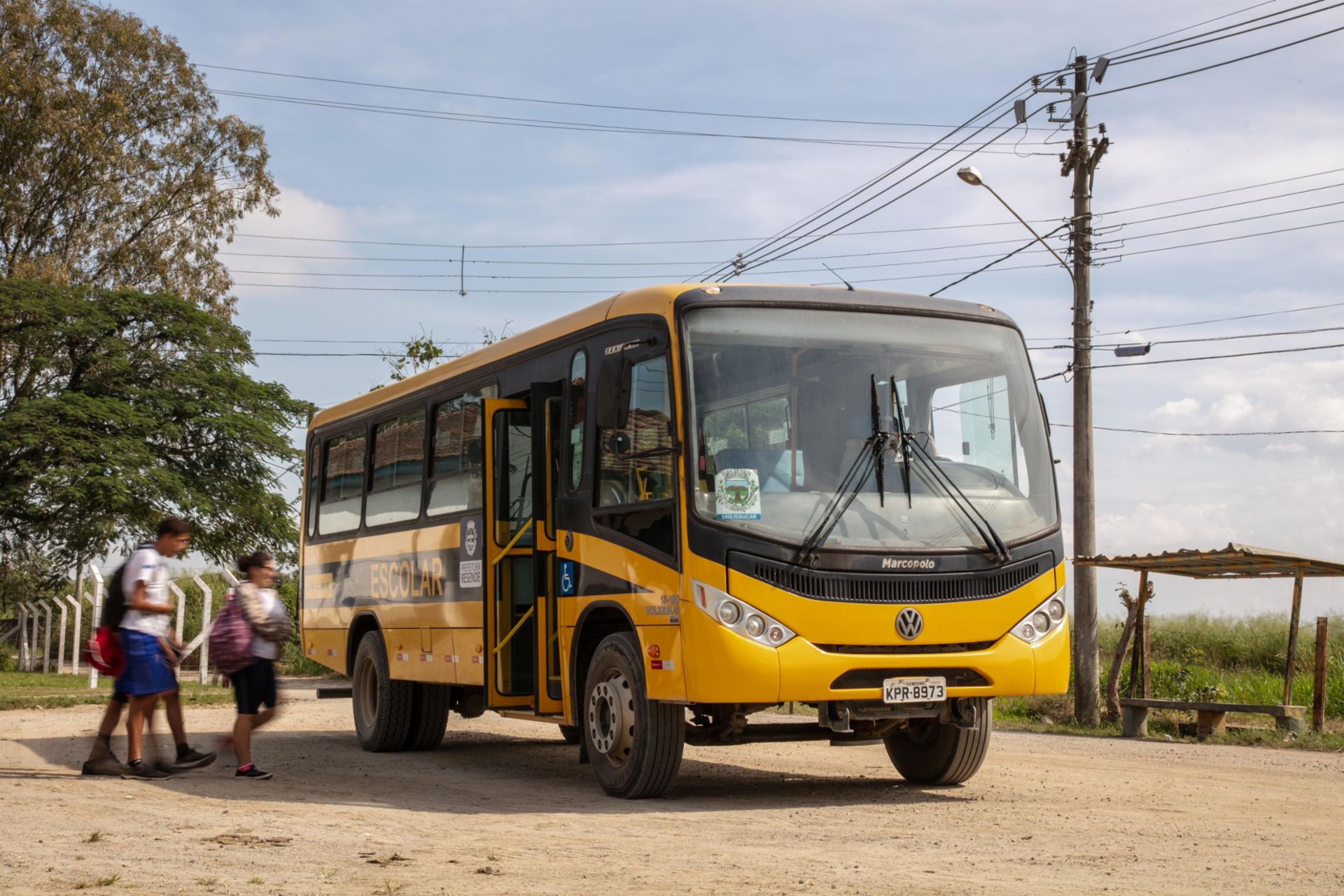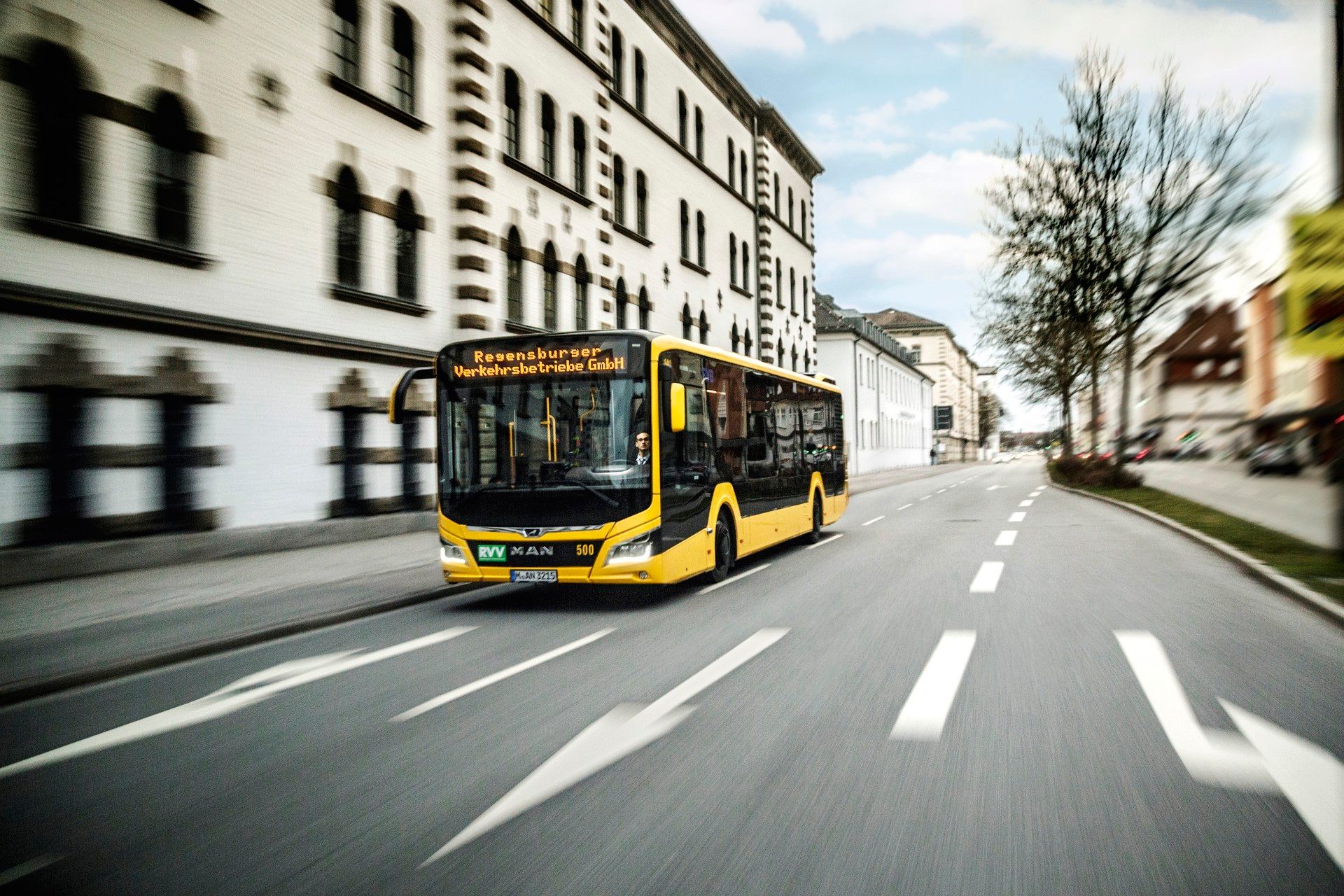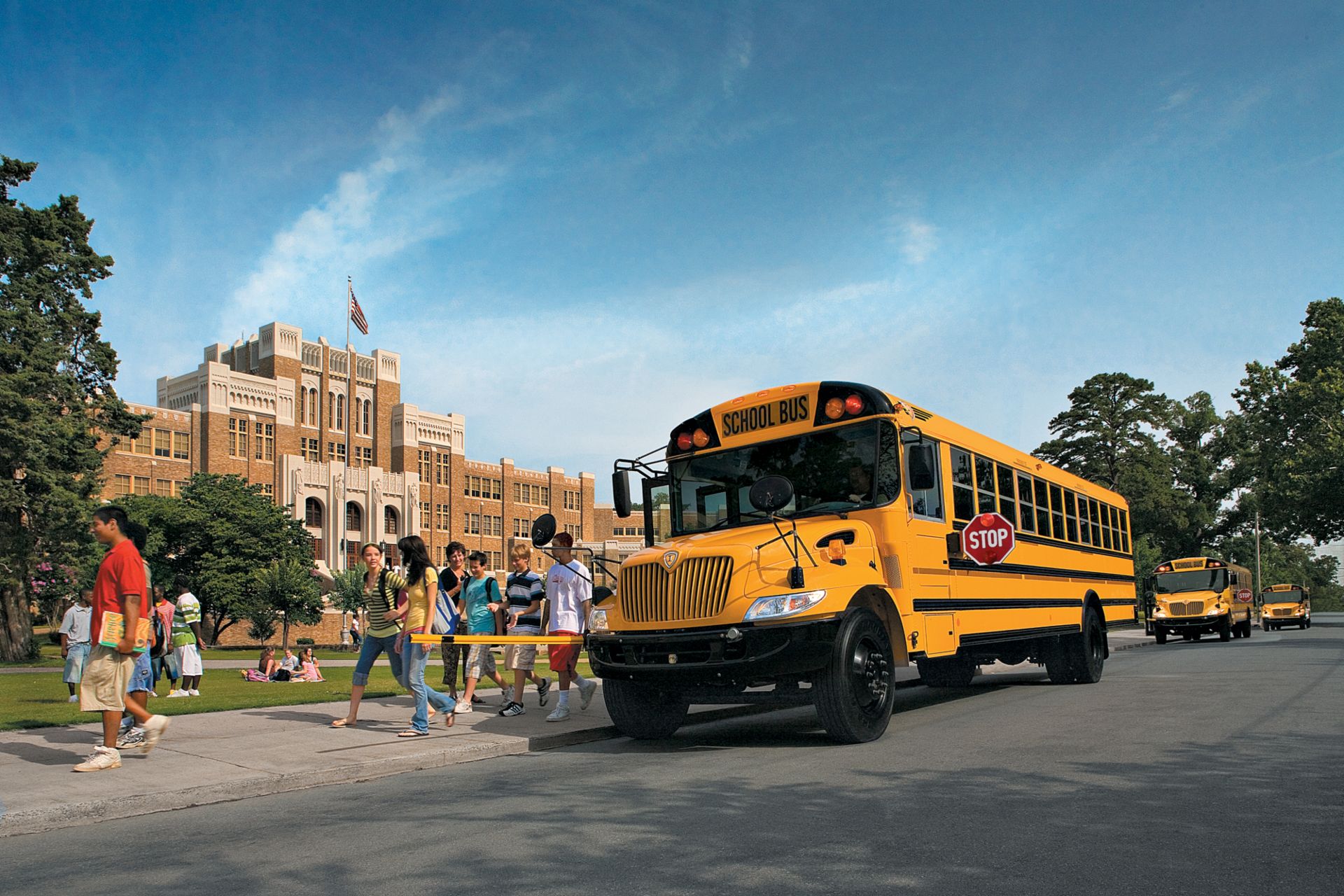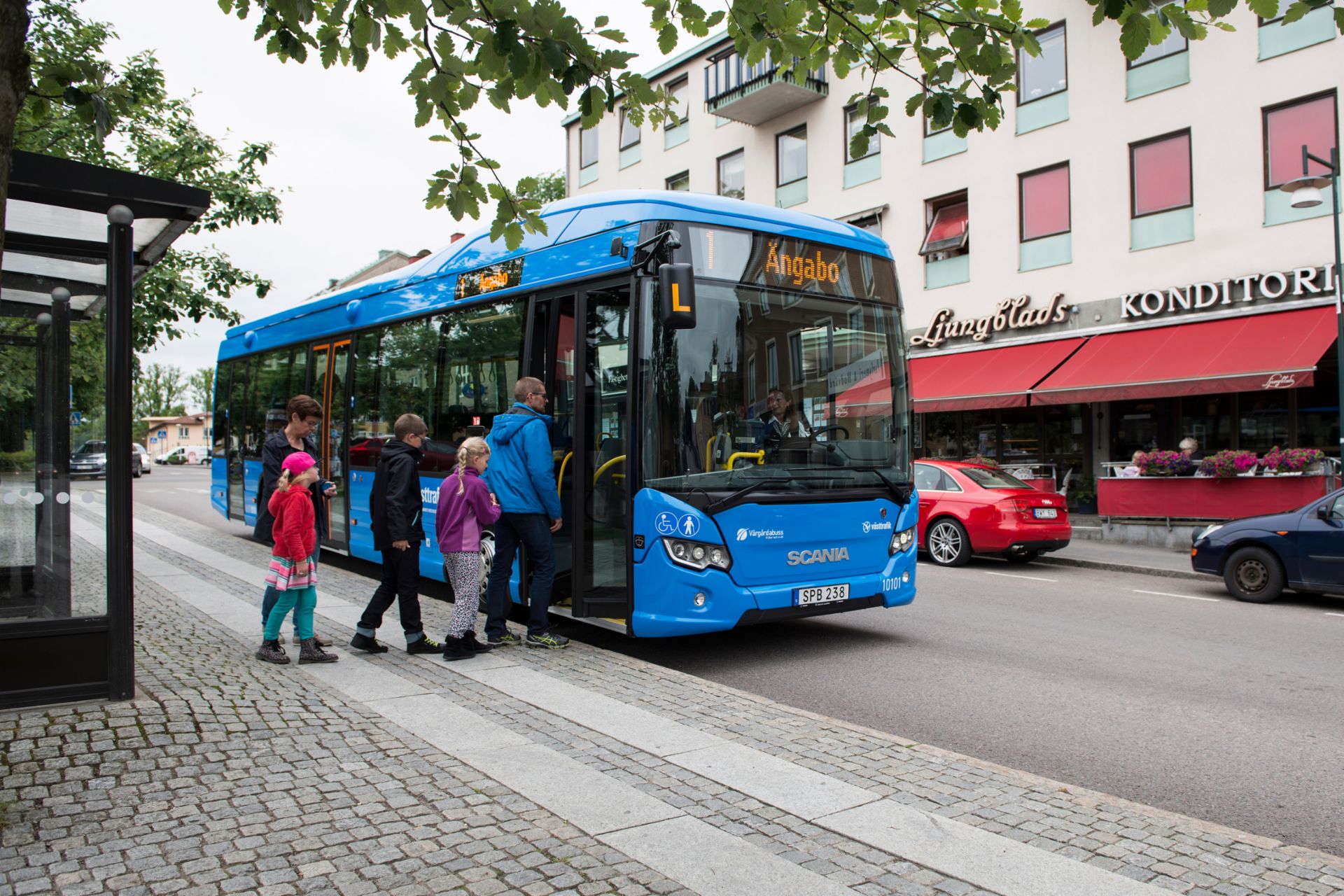In the US, these distinctive vehicles are traditionally used to drive pupils to school. Their striking appearance remained pretty much the same for decades, with millions of children and young adults in the US taking the yellow buses to school and back every single day.
By contrast, hardly anyone notices groups of schoolchildren making their way to school in Germany. That’s because most of the time, they take regular line-service buses.
In Brazil, on the other hand, off-road vehicles are used to transport pupils to school—and have tough road conditions to overcome.
Regardless of where the youngsters taking them live—school buses are supposed to be particularly cost-efficient and safe. Sometimes, they even guarantee children access to schooling in the first place.

School buses as “allies of education”
For instance in Brazil, where many young people living in remote regions leave school early because getting there every day is too much hassle. In light of this, the Brazilian government has set up a special incentive program known as “Caminho da Escola” (Portuguese for “School Run”). To date, Volkswagen Caminhões e Ônibus has supplied over half of the new vehicles purchased using the program funds. The TRATON GROUP brand has just handed over its 20,000th Volksbus vehicle to the program. The bus now offers pupils in the Santa Catarina state a safe and convenient way of getting to state-run educational institutions.
The Volksbus vehicles are known in all of South America. Virtually every municipality in Brazil has at least one of those “allies of education” in operation to drive pupils to school. Each bus can seat between 29 and 59 children, depending on the variant.
School buses in Brazil have to endure extremely harsh conditions. Outside the cities, roads are often unpaved and full of potholes. This is why Volkswagen school buses are equipped with a reinforced suspension and a forged front axle and can handle even the steepest of gradients. They were designed for extreme conditions and can handle a lot. “We have developed these features based on our extensive experience within the framework of the state-run school bus program,” explains Ricardo Alouche, Vice-President of Sales at VW Trucks and Buses in Brazil. For all their robustness, special lighting and safety doors are still a requirement for school buses in Brazil, as are seat belts.

Breathalyzer test and enough seats for all required in France
School buses are also subject to special requirements in Europe. French municipalities, for example, invite bids for vehicles that are used exclusively for this purpose. All children must have a seat, with both a breathalyzer test for drivers and a wheelchair lift also required. Despite all that, these vehicles are reserved for transporting pupils. As a result, they cover a considerably smaller distance than is usually the case for buses in Germany. TRATON brand MAN’s main seller in the French market is the Lion’s Intercity coach designed to transport pupils.
In Germany, the range of MAN vehicles pupils use to make their way to school is more extensive, since most of them take a normal line-service bus. These buses cover 60,000 kilometers a year—twice as much as the school buses in France.
As a result, a range of very different vehicles can be seen driving German children to school: from high-floor buses like the Lion’s Intercity all the way to low-floor buses, for example the new MAN Lion’s City. The vehicles also vary in length—depending on how busy the line in question is and what it requires, since it is only used by pupils at particular times of day.

A color that sends a message and maximum safety
In the United States, this is impossible to imagine. Pupils in the US only take school buses, whose color sends a clear message. This special color was designed back in 1939 and is easier for the human eye to spot than any other hues. Today, this color has its own official name: National School Bus Glossy Yellow.
Additionally, US school buses are equipped with numerous other special features: many states, for example, call for CCTV surveillance for the buses’ exterior and interior. As a general rule, multiple mirrors are required so that the driver can keep an eye on what is going on around the bus. The extended stop-sign arm has also been a typical feature of these buses for decades, folded out at every bus stop as a warning to other vehicles. By contrast, the requirement to wear a seat belt is far from being universally enforced.
Navistar, a strategic partner of the TRATON GROUP, is leading the way in integrated school buses in the US. Navistar’s yellow IC Bus models transport 26 million schoolchildren in the US every single day, from Alaska to Florida. These vehicles are also subject to the minimum dimension requirements for US school buses, which were laid down 80 years ago. Furthermore, different states have their own rules, for instance when it comes to seat belts. This multitude of regulations is another reason why Trish Reed, Vice President and General Manager of IC Bus, believes that “school buses are the safest vehicles on our roads.” Incidentally, as of last year IC Bus is the first manufacturer to also equip its school buses with an electronic stability program (ESP).

There is another reason why yellow school buses have their typical enormous overhang: they are built on truck platforms. Their special shape, among other factors, made these vehicles icons in the US a long time ago, with movies and TV series eventually also making them familiar to people all over the world.